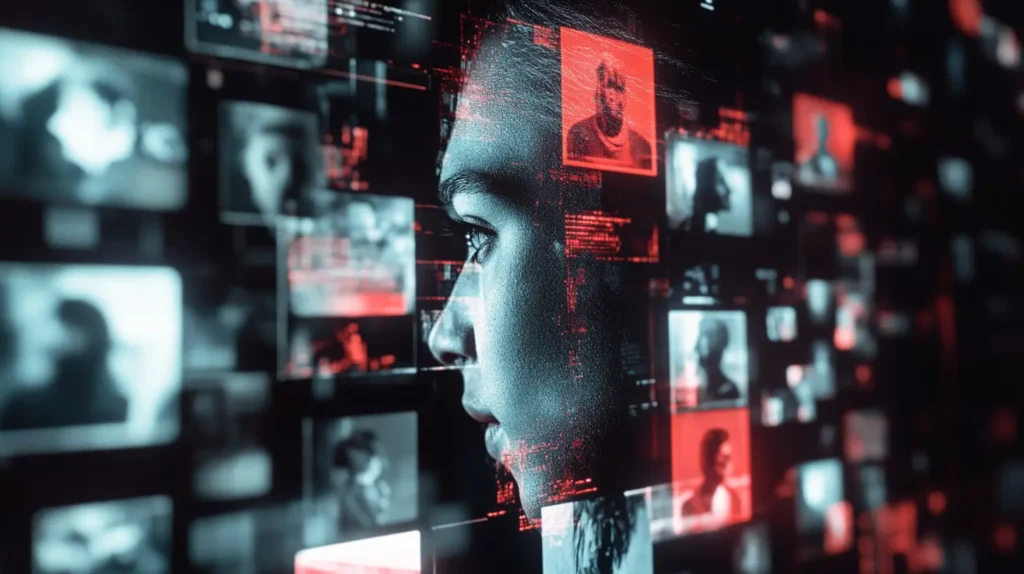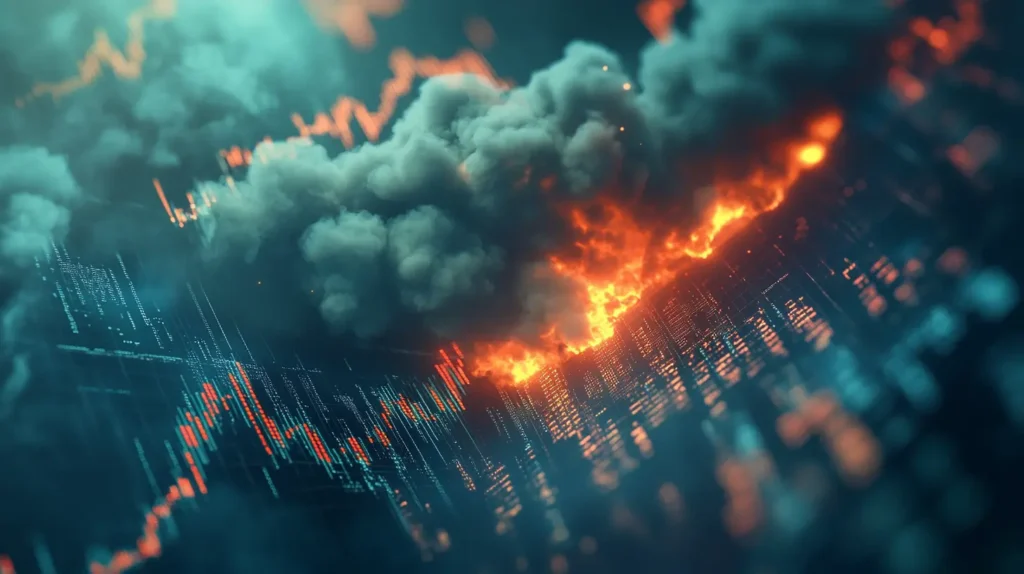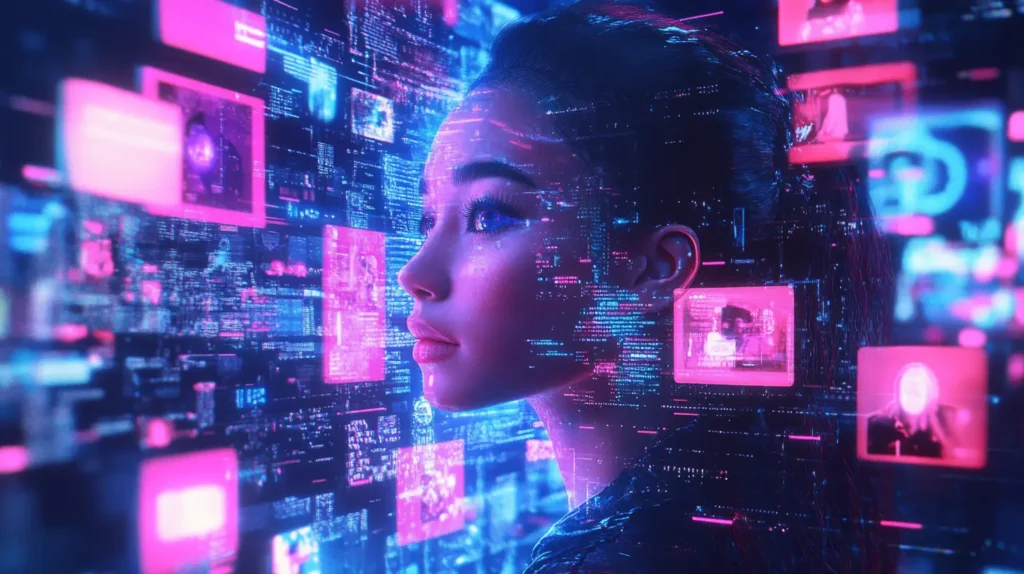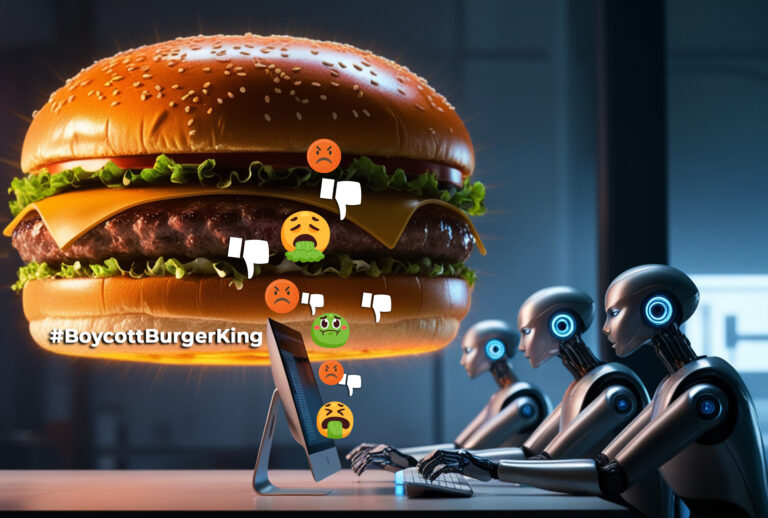Remember when seeing was believing? Those days are rapidly fading into history.
Most people think of deepfakes as videos where someone tries to impersonate another person, but the term actually encompasses a much broader range of AI-manipulated content, including synthetic images, manipulated audio, and other artificially created media.
This technology, sometimes used for harmless fun and entertainment, can become a powerful weapon in the wrong hands, capable of being wielded against brands and companies with devastating impact.
With deepfakes becoming increasingly advanced, companies face a new kind of threat that goes beyond traditional brand reputation management and requires state-of-the-art technology to detect and counter effectively.
Why Deepfakes Are a Threat To Brands

Imagine discovering a viral video of your product exploding during normal use, or leaked factory footage showing dangerous quality control practices in your facility – except none of it ever happened.
These scenarios are no longer science fiction. They’re real possibilities occurring with increasing frequency as this technology becomes more accessible.
First appearing on social media in 2017, deepfakes began as AI-powered face-swapping technology used mainly for entertainment, placing celebrities’ faces into movies or creating parody videos.
Within just a few years, the technology evolved from obviously manipulated content to nearly undetectable alterations that can fool nearly anyone – all achievable by a single person with basic software and minimal technical expertise.
But manipulated videos are only one piece of a much larger puzzle. While they may be the most recognizable form of deepfake technology, the threat extends far beyond video content.
Whether it’s manipulated video, synthetic audio, or AI-generated photos, all forms of deepfake technology share one dangerous characteristic: They can be used to spread disinformation with a level of realism that makes them difficult to debunk quickly, and their threat to brands manifests in two ways: immediacy and severity.
The immediacy lies in how swiftly this fabricated content can damage trust, as customers, partners, and stakeholders may act on the false information before verifying its authenticity.
The severity, on the other hand, comes from the emotional and visual impact deepfakes carry; they can manipulate social media users’ emotions and permanently alter their perception of your brand.
Stock Market Impact

Financial damage from AI-generated deceptive content isn’t theoretical, and an incident from May 2023 proves just how vulnerable the market is to this type of manipulation.
When an AI-generated image showing smoke rising near the Pentagon was shared by a single account on X (formerly Twitter), it sparked widespread panic and caused immediate real-world effects, including a dip in the stock market.
This seemingly credible source was all it took for thousands of real profiles to share and amplify the fake content en masse. By the time the image was detected as fake and removed from the platform, the damage was done – the S&P 500 had dropped by 0.3%.
What makes this incident particularly alarming is that it wasn’t the result of a coordinated disinformation campaign but the actions of a single user on social media.
If one fake account can go viral and disrupt markets, imagine the damage a well-organized group of bad actors could do to your brand.
Beyond Video Manipulation
Bad actors typically combine deepfakes with other AI-generated content to craft convincing backstories for inauthentic profiles, complete with personal details, interests, and entire social media histories.
Using GenAI tools, they can create galleries of photos featuring the same non-existent person in different settings and situations, adjust the tone of voice and speaking patterns, as well as generate supporting content that adds credibility to their deceptive narratives (such as fake news articles or blog posts).
When hundreds or thousands of these accounts latch onto a discussion and repeat the same talking points, it creates an illusion of widespread agreement that can be nearly impossible to distinguish from genuine social media activity.
The Technology Behind Deepfake Analysis

Deep fake analysis plays a crucial role in identifying and mitigating these threats, as deepfake detection tools now use multiple algorithmic approaches simultaneously.
For video deepfakes specifically, detection systems analyze frame-by-frame consistency for digital artifacts and check audio-lip synchronization, as manipulated videos often struggle with perfect alignment throughout their duration.
Another video-specific method is pulse detection. Since real videos of people contain subtle color changes in skin tones caused by blood flow, detection tools can identify these missing biological markers as indicators of artificial content.
When it comes to images, deepfake detection systems hunt for small flaws, such as unnatural shadows, misaligned reflections, and impossibly symmetric facial features.
The technology also examines metadata and digital signatures, as every camera and recording device leaves unique fingerprints in its content – subtle patterns that AI generators typically cannot replicate perfectly.
The Bigger Picture
As we’ve already explained, deepfakes don’t exist in isolation – they’re typically just one component of sophisticated disinformation campaigns.
While detecting individual deepfakes is a crucial first step, it must be paired with broader monitoring tools that can identify the entire deceptive ecosystem: networks of fake profiles, fabricated social media histories, and coordinated amplification campaigns.
That’s why when suspicious content is identified, monitoring systems immediately begin tracking its distribution patterns across platforms.
Unusual spikes in sharing, coordinated amplification by accounts with similar characteristics, or content appearing simultaneously across multiple platforms indicate a manufactured campaign rather than organic viral spread.
If multiple sources suddenly begin referencing the same incident simultaneously, or if supporting evidence appears too quickly and too “perfectly”, it’s a strong indicator of a pre-planned disinformation campaign.
How Cyabra Can Protect Your Brand
Cyabra’s AI-powered platform specializes in detecting coordinated disinformation efforts by analyzing the behavior and authenticity of accounts sharing suspicious content
When threats such as deepfake content surface, Cyabra’s system immediately begins tracking its spread patterns, detecting networks of inauthentic accounts, and flagging dangerous narratives before they cause significant damage.
Your company will also get the benefits of real-time monitoring across all major social media platforms, giving you the ability to distinguish between organic viral spread and coordinated disinformation campaigns.


